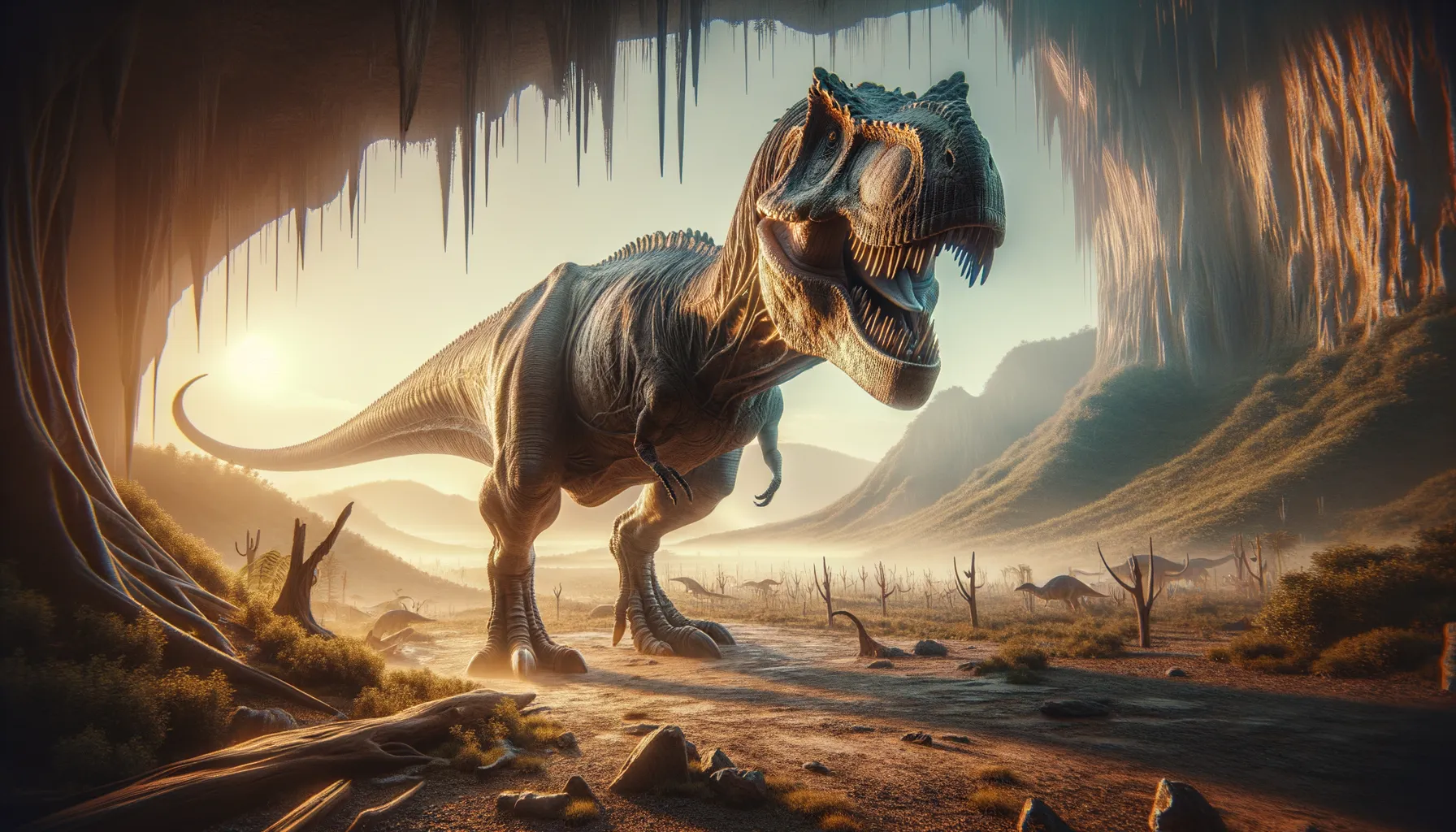
Dachongosaurus
A gentle giant from the age of giants.
Period
Jurassic
Length
Up to 60 feet long.
Height
Approximately 15 feet tall.
Weight
Around 15 tons.
The Dachongosaurus was a colossal dinosaur that roamed the lands during the Jurassic period. With its enormous build, it became one of the significant herbivores of its time. Fossil discoveries in China have shed light on its existence, offering insights into a creature that shaped the prehistoric environment. This massive dinosaur is notable for its unique skeletal structure, which provides clues about its lifestyle and interactions within its ecosystem.
Diet
Dachongosaurus was primarily a herbivore, feeding on a variety of plant materials. It likely consumed leaves, ferns, and other vegetation within reach.
Hunting
As a herbivore, it did not hunt but rather foraged extensively for plant material. Its long neck allowed it to reach vegetation others could not.
Environmental challenges
Dachongosaurus faced challenges from predators and fluctuating climates that affected food availability. Changes in the environment would have required adaptation to find food sources in different areas. The competition from other large herbivores also posed a constant challenge in securing enough vegetation to sustain itself.
Speed
Moved at a moderate pace.
Lifespan
Lived up to 70 years.
First discovery
Fossils discovered in the Dachong region of China.
Fun Facts
- Dachongosaurus was a long-necked dinosaur, known for its impressive size, roaming the lands during the Jurassic period.
- It was a herbivore, meaning Dachongosaurus primarily fed on plants, using its long neck to reach foliage high in trees.
- The name 'Dachongosaurus' is derived from Chinese, highlighting where its fossils were first discovered in the Dashanpu Formation.
- Although Dachongosaurus was huge, its brain was small compared to its body, a common trait among giant dinosaurs.
- Dachongosaurus was a part of the sauropod family, a group known for their enormous size and long necks.
- The fossils of Dachongosaurus have provided scientists with valuable insights into the diverse ecosystems of dinosaurs in Asia.
- Despite its size, Dachongosaurus moved relatively slowly, allowing it to conserve energy while still reaching its favorite plant meals.
Growth and Development
The young had to grow rapidly to evade predators typical of their time. Growth rings in their fossils suggest that their growth rates might have varied depending on the availability of resources. Juveniles likely stayed with adults for protection until big enough on their own.
Habitat
Dachongosaurus inhabited floodplains and forested environments that offered ample vegetation. Their habitat provided not just food but also means for concealment from predators. Seasonal changes would have influenced their migratory patterns within these rich landscapes.
Interaction with other species
Collaboration with other herbivores might have occurred, especially during foraging. Predators of the time, such as large carnivorous dinosaurs, posed threats to them, especially to the young and weak. The presence of different herbivores reduced the threat of overgrazing in their habitat.
Natural lifespan
Dachongosaurus naturally lived for several decades thanks to its size.
Reproduction
These dinosaurs laid large clutches of eggs in nests made in ground scrapes. Initial parental care might have been offered, with hatchlings growing rapidly to fend for themselves. Nest sites were chosen carefully to protect the eggs from predators.
Social behaviour
Dachongosaurus likely lived in groups for protection against predators. Social behaviors would have included communication for alerting others of danger. Group living allowed them to efficiently locate and consume vegetation.
Fossil locations
The primary fossil site for Dachongosaurus is the Dachong region in China. Fossils have provided crucial insights into its structure and lifestyle. Discoveries in these regions highlight the dinosaur's distribution and ecological preferences.
